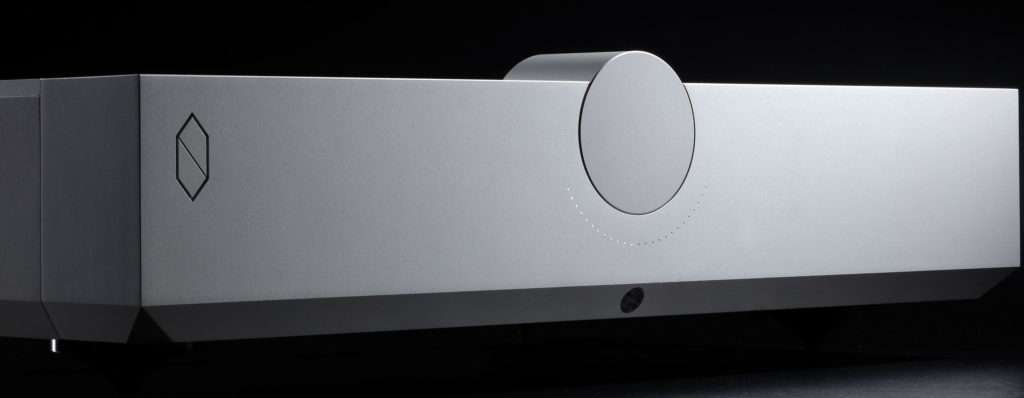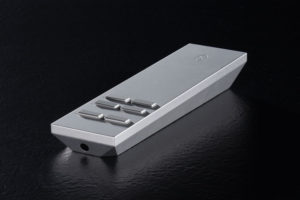How I made expensive sound with the D1 on the cheap
I have heard a lot of $100K-250K rigs, so I have a pretty good feel for when sound is in the proximity of the top 10% of systems. The permutations I made in systems with the D1 I suspected could be taken further. As in recent months I first revealed the Audio Blast: The Schroeder Method of Interconnect Placement, and now have been testing it further and refining it, with the D1 I returned to an amplifier setup I had not used in years to maximize the impact of the double interconnect method. As I often do, I admonish the audiophile to heed the warnings of potential problems associated with the unknowns and to avoid wandering afar from the patterns of placement of doubled interconnects discussed in the article.
I had prepared enough systems with the doubled interconnects that I anticipated an excellent result in conjunction with the D1 using either RCA or XLR connections to certain amplifiers. I was right, only I didn’t know just how right I was! I have on hand the First Watt J2 Amplifiers that I reviewed not too long ago. They are my favorites of the three inspired Nelson Pass amps I have reviewed. They are pristine, tonally rich, spacious and non-fatiguing. The only drawback is they are 25wpc, so they lack in macrodynamics compared to more powerful amplifiers. I recalled being told years ago that if two stereo amps are used similar to monoblock amps, using only one channel each as it is powered by the amp’s power supply, the macrodynamics improve over use as a stereo amp.
Knowing that First Watt designs are as fabulously durable as Pass Labs components, I was confident that a bit of experimentation would cause no harm. I put up the following rig: Small Green Computer sonicTransporter AP i7 4T and SONORE Signature Rendu SE; Clarity Cable Supernatural USB (1m); COS D1; twinned (Schroeder Method) Clarity Cable Organic XLR Interconnects; both First Watt J2 Amplifiers, each using only one channel to drive one speaker; Clarity Cable Natural Speaker Cable; Vapor Audio Joule White Speaker; additional L/R run of Silnote Anniversary Speaker Cables (banana terminations) from the same output as the mains, feeding Legacy Audio XTREME XD Subwoofers. All power cables were ANTICABLES Reference (Level 3).
This was handily the most extreme system I achieved with the D1. The quality of the sound was congruent with systems in the $100K+ range. The Vapor speakers, which I have heard in my room with no less than a half dozen fine, powerful amplifiers – some monoblocks –outstripped the performance of all of them! It is difficult to overstate the impact of the Schroeder Method and the use of only one channel with the J2 Amplifiers. It maximized the strengths of the J2 while shoring up the only weakness, the macrodynamic power.
There is a clearly discernible sign of how a dynamic speaker is driven by an amp, and if one knows the speaker and what to listen for, the audiophile can tell whether the amp is under powering, adequately powering, or powering the speakers in an exemplary fashion. The telltale sign is how noticeable the box colorations are. In an underpowered condition the speaker’s cabinet will present in a nearly obnoxious way; the bass will be masked with the sound of resonances of the cabinet. The drivers are not being controlled enough, or perhaps we should say not being driven forcefully enough, to overcome the boxy colorations.
With an increase in power the sensation of hearing the driver over the cabinet becomes more evident. When a dynamic speaker is very well driven the character of the drivers overwhelms the box colorations and the result is a much tighter, more powerful sounding speaker. It does not matter how high up the chain an audiophile goes with their dynamic speaker, if a high pedigree speaker is matched to a lower powered amp, the boxiness of the cabinet will always assert itself to encroach upon the character of the drivers. The only way to escape that effect is to move to a more powerful amp.
However, I discovered that the Schroeder Method among other things boosted the macrodynamics of the First Watt J2. It seems incredible, even ludicrous, but observe that I have attained much superior sound across the board from the J2 in this configuration than with any other high power amplifier. I hasten to add that in using these other amps I had not at the time devised the Schroeder Method, so it is nearly a surety that these other amplifiers also would perform on a much higher level if the Schroeder Method was used. The only firm conclusion to draw is that I was able to make the 25wpc J2 truly perform on a level beyond previously used Class A or A/B 200-350wpc amplifiers, and beyond 1,000wpc class D amplifiers.
In summary, I was using the D1 with an affordable pair of excellently designed, lower powered amplifiers, but there was a way to boost them to a level of performance beyond more expensive separates. That’s not a bad deal, and worth contemplating.
All of this made me appreciate the D1 even more. It responded readily to the cabling changes and was more refined and precise than a popular pro-oriented DAC. It made the First Watt J2 deliciously delicate and devastatingly powerful sounding. It showed its pedigree as the leader among three DACs in the $2.5-3K range, the other two being the Exogal Comet and the Eastern Electric Minimax DAC Supreme.
CONCLUSION
The D1 is an excellent choice for the connoisseur of sound who wants a DAC that is refined enough to be used with top shelf components. While some more popularly known DACs show warts when pushed to perform, the D1 keeps its composure. It is a highly refined DAC, especially as it is mated with higher pedigree amplifiers and speakers.
ADDENDUM
It is not my policy typically to amend reviews, but recently there were some changes to equipment, systems and methods that profoundly affected at least one aspect of my assessment of the COS D1. Briefly I would like to discuss the changes and updated conclusion of the sound. The quality of performance of the D1 has never been in question, and my recommendation of the D1 as a first rate component is unaffected by this article. If anything, the recommendation is strengthened.
Two things have occurred in recent weeks to force the reconsideration of the relative performance of the D1’s Buffer feature. The buffer caches the music and interprets the data according to COS’s algorithm. This is discussed in detail in my review.
I was told by COS that the Buffered performance was considered by the company to be superior to the unbuffered. In my review period I used several systems and concluded that I preferred in several setups the unbuffered signal to the Buffered. This is a matter of taste, and in my use I concluded that though the unbuffered signal was thinner sounding, it offered a cleaner source for the amp and speakers.
I am now reversing that conclusion based on two things: the arrival of the Gold Note PA-1175 Amplifiers, and the discovery of the Schroeder Method of Interconnect Placement, which has been in use with the D1 for several weeks.
The Gold Note PA-1175 Power Amplifiers are in for review, so a separate article about them will be forthcoming. The pertinent aspect of these amps to the Buffered output of the D1 is that they have comparatively much higher headroom than the other amps in use (Benchmark AHB2, Belles ARIA Mono Blocks, First Watt J2 (2)). The sea change in headroom opens up the Buffered output unlike the other amps I used in the review. The Buffered output was preferred over the unbuffered, which is a different conclusion than with the other amps.
Adding to the excitement, the revelation of the Schroeder Method of Interconnect Placement has been monumental in system building for me since its discovery. I advise those unfamiliar with it to thoroughly educate themselves to this “do at your own risk,” stupendously effective method of hooking up components. To begin, refer to my Audio Blast article regarding the Schroeder Method published here at Dagogo.com.
The D1 utilizing the Schroeder Method of interconnects (in current usage doubling the ICs by use of four cables and four RCA or XLR splitters to form two doubled ICs) causes a radical reconsideration of the sound of the D1. Especially with the Schroeder Method employed with XLR cables there is revealed entire volumes of sound quality unattainable with single interconnects. The Buffered output is shown to be far more complex than previously heard, and in a word superior to the unbuffered.
My conclusion of all this is that in systems without the Schroeder Method and with particular amps the unbuffered output of the D1 may be preferred, but in an absolute sense when set up with more extreme system development the Buffered output is preferred.
Copy editor: Dan Rubin
- ← Previous page
- (Page 3 of 3)


Hi,
Great article. I am a little confused by this statement…
“It showed its pedigree as the leader among three DACs in the $2.5-3K range, the other two being the Exogal Comet and the Eastern Electric Minimax DAC Supreme”.
The D1 is 9k, the Exogal Comet is 4k and the EE Minimax Supreme is about 1.6k.
I am considering the COS Engineering D2V. The D1 is out of my price range. I am also interested in the Exogal Comet Plus. So I was a little confused by the price range statement.
Thanks
Christopher,
God’s Peace,
Sorry, misstatement; it should have read, “… the leader among the other two DACs, which are in the $2.5-3K range…”
Blessings,
Douglas Schroeder